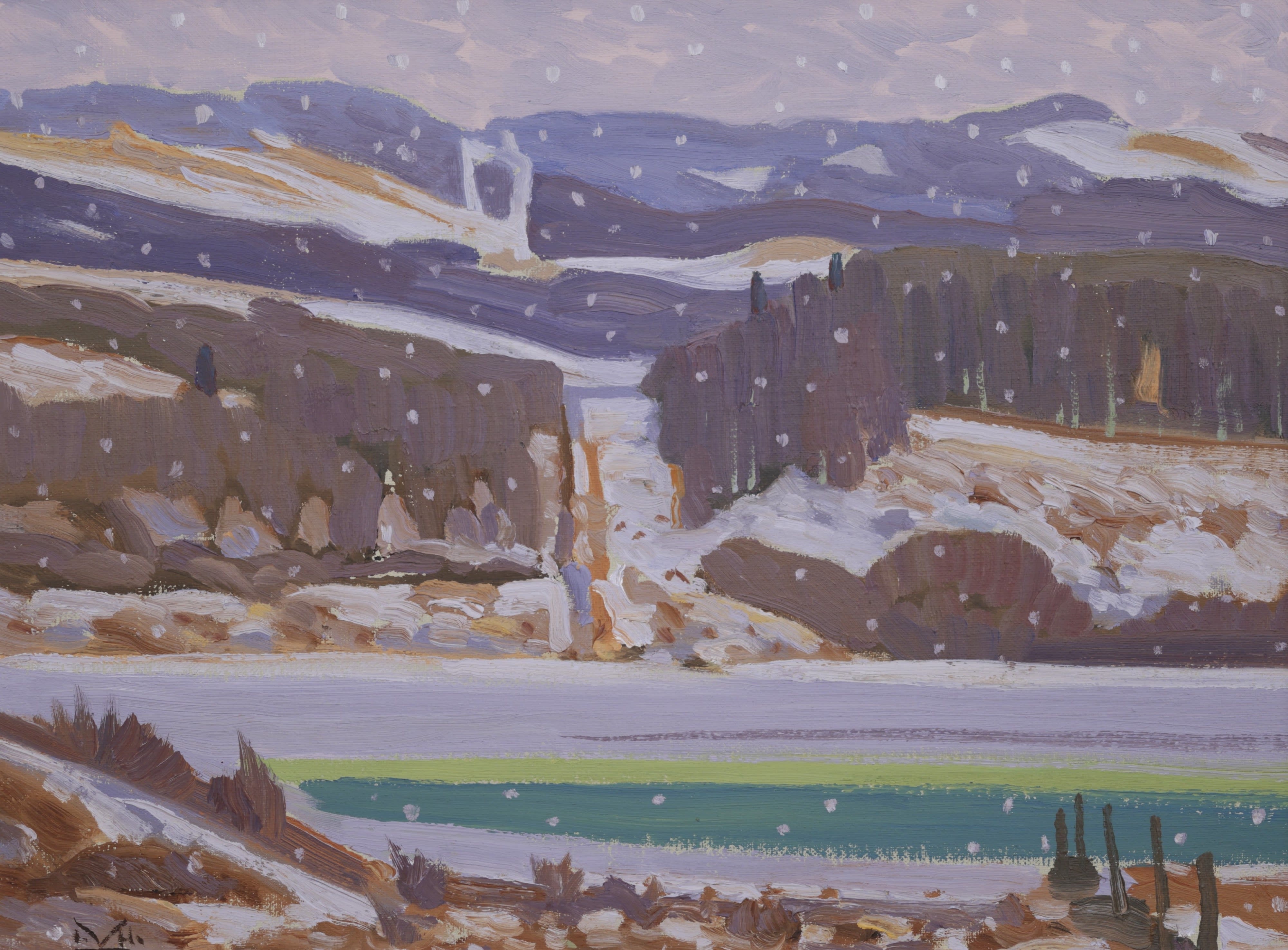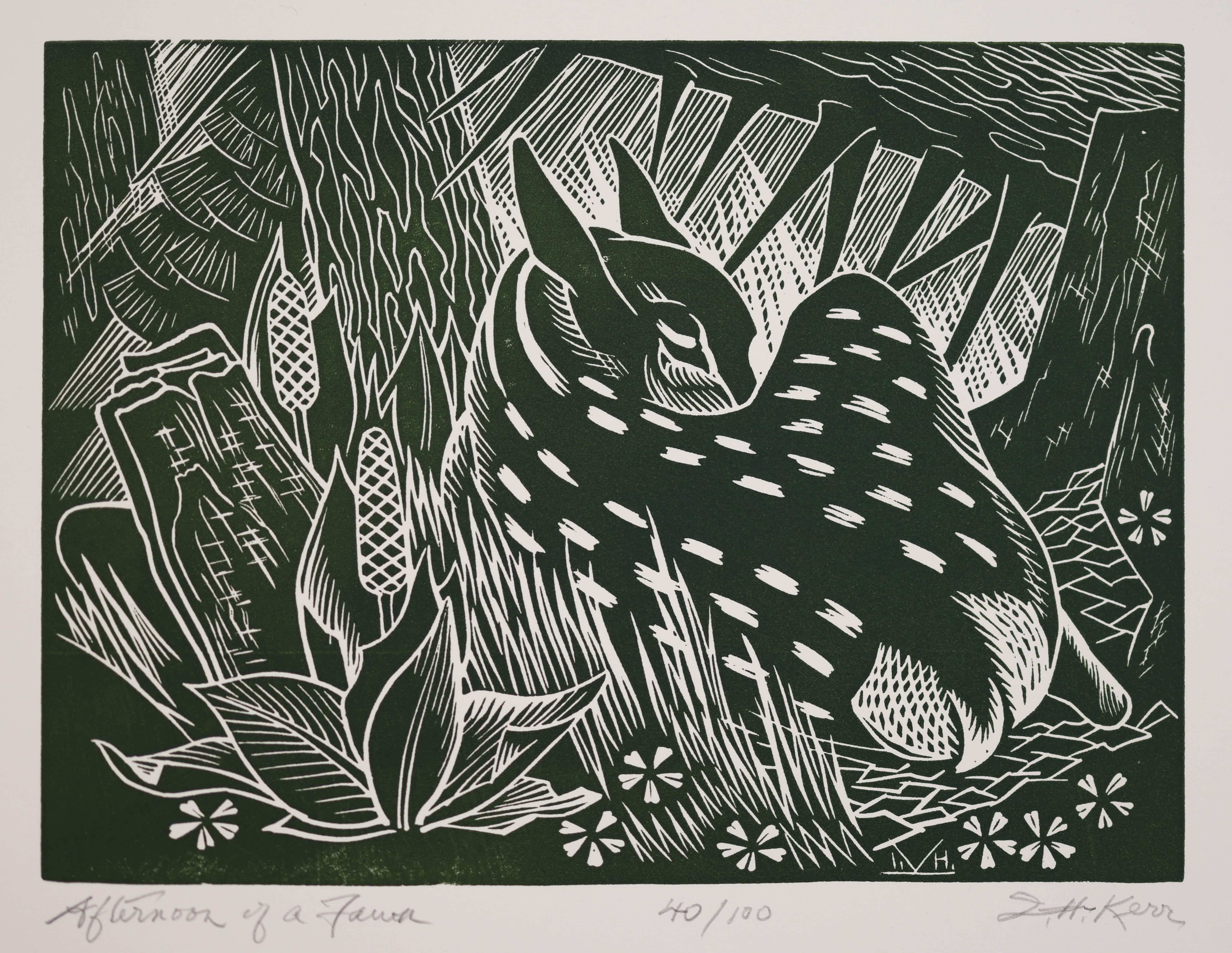

Illingworth Holey Kerr (August 20, 1905- January 6, 1989), commonly known as Buck Kerr, was a distinguished Canadian artist, celebrated for his vivid landscapes of the Alberta and Saskatchewan foothills. Born in Lumsden, Saskatchewan, Kerr displayed early artistic talent, fostered by his mother, an amateur watercolourist. He excelled in art from a young age, evidenced by winning awards at the Regina Exhibition in 1919.
 Illingworth Holey Kerr; From My Window
Illingworth Holey Kerr; From My Window
Kerr's formal education in art began at the Central Technical School in Toronto, followed by studies at the Ontario College of Art (OCA) from 1924 to 1927 under influential artists such as Arthur Lismer, J.E.H. MacDonald, Frederick Varley, and J.W. Beatty. After OCA, Kerr spent time painting in the Georgian Bay area of Ontario. His career further diversified when he traveled to England and Scotland, engaging in film production and contributing to various projects depicting Canadian life, such as illustrations for the 1939 New York World's Fair. During this time, he met and married Mary Spice of Yorkton, Saskatchewan, in 1938, and they spent their honeymoon traveling through Paris and the south of France.

Illingworth Holey Kerr; Snow in the Hills, Turner Valley
Returning to Canada, Kerr became a faculty member at the Vancouver School of Art from 1945 to 1947. He then took on the role of head of the Art Department at the Provincial Institute of Technology and Art in Calgary (now the Alberta University of the Arts). His tenure there was transformative, establishing the Alberta College of Art and mentoring generations of artists.

Illingworth Holey Kerr; Magpies, Winter Sun
Throughout his career, Kerr’s style evolved from representational to more abstract expressions, drawing influence from European modernists like Franz Marc, Pablo Picasso, and Georges Braque. His works include a wide range of themes such as prairie landscapes, wildlife, and portraits, including those of notable Albertans. Kerr’s mediums spanned oil, acrylic, watercolour, charcoal, and various printmaking techniques.
 Illingworth Holey Kerr; Cougar
Illingworth Holey Kerr; Cougar
Kerr's contributions to Canadian art were widely recognized. He received numerous accolades, including an honorary doctorate from the University of Calgary and an appointment to the Order of Canada. His works are preserved in prestigious collections such as the National Gallery of Canada and the Glenbow Museum in Calgary.

Illingworth Holey Kerr; Afternoon of a Fawn
Kerr retired from teaching in 1967, entering a period of prolific artistic production until his tragic death in 1989. His legacy continues through retrospectives and exhibitions, solidifying his status as a pivotal figure in Canadian art history. His influence is celebrated at the Illingworth Kerr Gallery, ensuring his spirit lives on in the art community.
This website uses cookies
This site uses cookies to help make it more useful to you. Please contact us to find out more about our Cookie Policy.